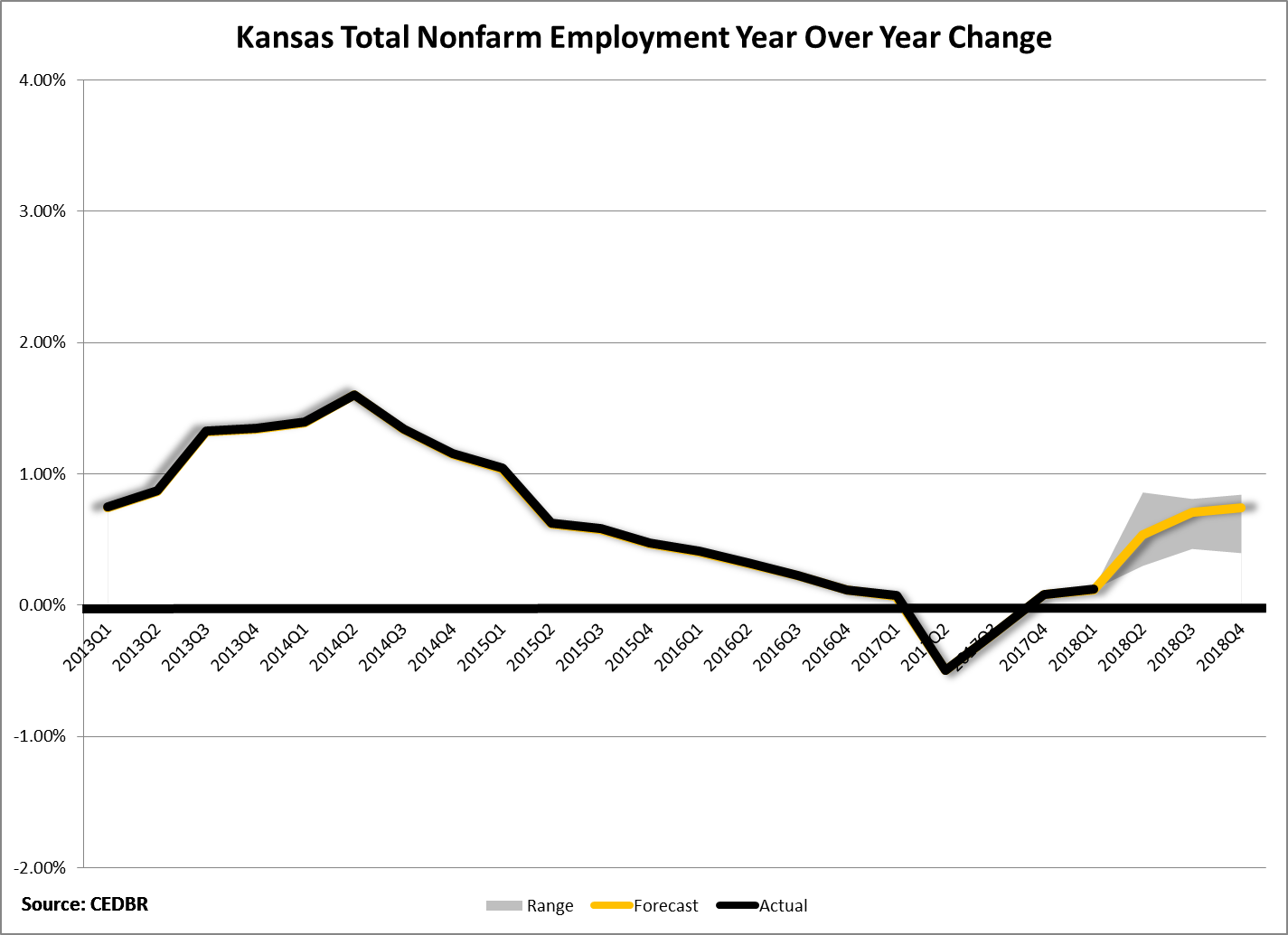Kansas Employment Forecast
Released May 23, 2018 (See previous version.)
In 2017, Kansas employment declined by 0.1 percent, a decrease of approximately 500 jobs. In 2018, Kansas total nonfarm employment is projected to increase by 0.6 percent, adding approximately 9,000 jobs, with a range of expected growth between 0.4 percent and 0.8 percent. This growth is projected to be higher than Kansas’ employment growth from 2016 and 2017, but still lower than the average growth from 2012 to 2014.
- Production sector employment is projected to remain approximately flat in 2018, adding less than 100 jobs. The natural resources, mining and construction sector is forecast to decline by almost 300 jobs, while the manufacturing sector is projected to grow by over 300 jobs. Natural resources and construction employment has declined in each of the past three years and remains over 7,000 jobs below its 2008 peak.
- The trade, transportation and utilities sector is forecast to add over 700 jobs and grow 0.3 percent. The transportation and utilities sector is projected to lead this growth, expanding 1.2 percent, with the wholesale trade sector growing 0.3 percent. The retail trade sector is projected to lag behind, with a 0.1 percent decline. This is a reflection of the continued weakness in retail sales in Kansas. In 2017, inflation-adjusted taxable retail sales for the state declined 2.4 percent.
- The service sectors are projected to lead growth in Kansas in 2018, as they have done in recent years. Growth in the overall service sector is expected to grow 1.2 percent in 2018, adding over 8,000 jobs. The two fastest growing service sectors are forecast to be the professional business services sector and the education and health services sector, each of which is projected to add over 3,000 jobs. The leisure and hospitality sector is also expected to grow over 1,700 jobs in 2018. The drivers for the growth in these three sectors are expected to be broader national growth for service industries, Kansas’ aging population, and changing consumer preferences. The information and other services sectors are collectively projected to lose 600 jobs.
- The government sector is expected to expand 0.1 percent, adding almost 200 jobs. This growth is projected to be primarily concentrated in the local government sector, while state and federal government employment is expected to remain flat.
- The Kansas City MSA is expected to grow faster than the Kansas state average, expanding 1.6 percent, while the Topeka and Wichita MSAs are projected to grow at 0.4 percent.
Nationally, real GDP grew 2.3 percent in 2017, which was primarily driven by increases in personal consumption expenditures and private investment. National employment increased by 1.6 percent in 2017.
| DOWNLOAD PDF VERSION |









